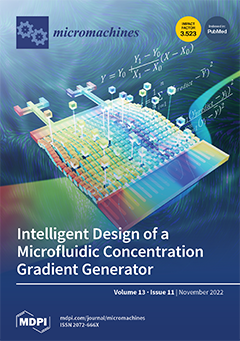In this study, iron oxide nanoparticles (FeO
x NPs) were synthesized by using Fe solution recycled from NdFeB permanent magnet scrap. Furthermore, the effect of polyvinylpolypyrrolidone (PVP) as a surfactant on the characteristics of the FeO
x NPs was investigated. Firstly, Fe solution
[...] Read more.
In this study, iron oxide nanoparticles (FeO
x NPs) were synthesized by using Fe solution recycled from NdFeB permanent magnet scrap. Furthermore, the effect of polyvinylpolypyrrolidone (PVP) as a surfactant on the characteristics of the FeO
x NPs was investigated. Firstly, Fe solution was prepared by using 10% H
2SO
4 solution and Na
2SO
4 salt. In addition, three reducing agent solutions were prepared by dissolving PVP in 0.5 M NH
4OH solution in distilled (D.I.) water with concentrations of 0 wt%, 1 wt%, and 2 wt%, respectively. Each reducing agent solution was added dropwise into the Fe solution to precipitate three precursors of FeO
x NPs, and they were heat-treated at 400 °C to prepare three FeO
x NPs samples, P0, P1, and P2. In X-ray diffractometer (XRD) analysis, diffraction peaks of P0 sample are consistent with the Fe
3O
4 with (311) preferred orientation. The XRD peak shifted from Fe
3O
4 to Fe
2O
3 structure as PVP concentration increased, and the crystal structure of P2 sample was transformed to Fe
2O
3 with (104) preferred orientation. Brunauer, Emmett, and Teller (BET) specific surface area increased in proportional to PVP concentration. HRTEM observation also supported the tendency; the particle size of the P0 sample was less than 40 nm, and particle size decreased as PVP concentration increased, leading to the particle size of the P2 sample being less than 20 nm in width. In addition, particle morphology started to be transformed from particle to rod shape as PVP concentration increased and, in the P2 sample, all the morphology of particles was transformed to a rod shape. Magnetic properties analysis revealed that the P0 sample exhibited the highest value of magnetic moment, 65.6 emu/g, and the magnetic moment was lowered in the P1 sample, and the P2 sample exhibited the lowest value of magnetic moment, 2.4 emu/g.
Full article






